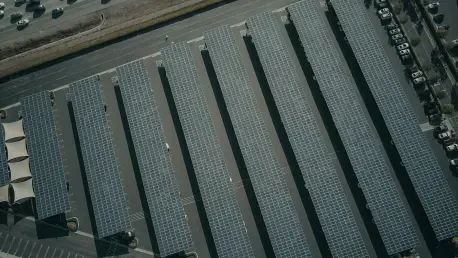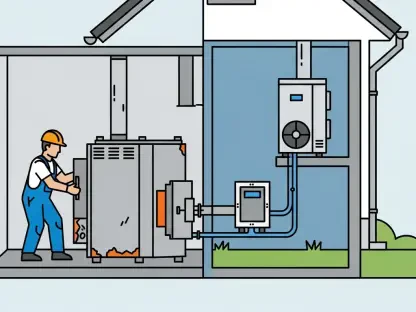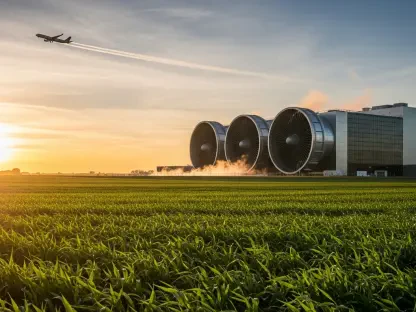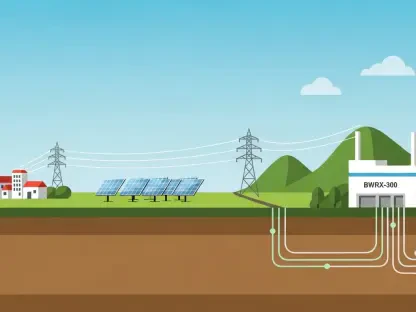Texas has long been a powerhouse of economic activity and population growth, but recent trends in energy consumption are raising eyebrows across the nation, highlighting the urgent need for strategic planning. Despite a relatively mild summer a couple of years ago that avoided new records for peak electricity demand, the state’s overall energy use is climbing at an astonishing rate. Managed by the Electric Reliability Council of Texas (ERCOT), the grid is under increasing pressure as total consumption growth far outpaces national averages. This surge, projected to exceed 5% annually in recent data, is driven by a unique blend of demographic shifts, industrial expansion, and technological advancements. As Texas continues to attract businesses and residents, the demand for power is becoming a critical issue for policymakers and energy experts alike. The following exploration delves into the key factors behind this rapid increase, the evolving energy mix, and the strategies needed to sustain reliability in the face of unprecedented growth.
Unpacking the Drivers of Demand
The relentless rise in Texas’ energy consumption can be attributed to a confluence of economic and demographic forces shaping the state’s landscape. Population growth has been a significant contributor, with millions flocking to Texas for its robust job market and affordable living. Alongside this, the influx of businesses—ranging from tech giants to manufacturing hubs—has amplified the need for electricity. The data center industry, in particular, stands out as a major consumer, with sprawling facilities requiring vast amounts of power to support cloud computing and digital infrastructure. Additionally, the electrification of oil and gas operations in regions like the Permian Basin has further intensified demand. ERCOT leaders have noted that this trajectory of growth is expected to accelerate over the coming years, far surpassing other states according to surveys from the U.S. Energy Information Administration. This unique combination of factors positions Texas as a focal point for energy challenges, demanding innovative solutions to keep pace with consumption.
Another critical aspect fueling this trend is the broader push toward electrification across various sectors. As industries and households increasingly adopt electric technologies—think electric vehicles and energy-efficient appliances—the strain on the grid becomes more pronounced. Unlike many other states, Texas operates on an independent grid system, which means it must address these demands without relying on external resources. This isolation adds a layer of complexity to managing supply and demand dynamics. Moreover, the state’s economic policies, which encourage industrial expansion and business relocation, continue to attract energy-intensive operations. Energy analysts have pointed out that while this growth signals a thriving economy, it also underscores the urgency of strategic planning to prevent potential shortages. The scale of this consumption increase, outpacing national trends by a wide margin, highlights the need for robust infrastructure investments to support Texas’ ambitious trajectory.
The Shift Toward a Diverse Energy Mix
A striking development in Texas’ energy landscape is the rapid integration of renewable sources, which is reshaping how the state meets its growing needs. Historically tied to fossil fuels, Texas has emerged as a leader in clean energy, topping national charts for new solar capacity installations over the past few years. The state also boasts the highest wind capacity in the country, with nearly 40,000 megawatts installed, according to ERCOT data. This shift has helped moderate peak demand pressures, especially during milder weather conditions, by providing alternative power sources that reduce reliance on traditional generators. Energy experts, such as Austin-based analyst Doug Lewin, have emphasized that this transition not only aids grid reliability but also distributes costs more effectively across a broader base. As renewable generation records continue to be set, the role of solar and wind in stabilizing the grid becomes increasingly evident, offering a buffer against the challenges of rising consumption.
Beyond the environmental benefits, the adoption of renewables reflects a pragmatic response to the state’s energy demands. Lower peak demands, partly attributed to solar and wind contributions, have eased immediate stress on the system, allowing for more sustainable growth. However, this progress does not eliminate the need for a balanced approach. Industry leaders advocate for an “all of the above” strategy, combining traditional sources with renewables to ensure reliability amid fluctuating conditions. The higher system utilization resulting from this mix is seen as a positive by analysts, as it benefits generators and helps manage expenses more efficiently. Yet, the pace of renewable infrastructure development must keep up with consumption trends to avoid future imbalances. Texas’ ability to maintain this delicate equilibrium between diverse energy sources and escalating demand will be crucial in shaping the grid’s resilience, especially as economic and population growth show no signs of slowing down.
Charting a Path for Grid Stability
Looking back, the journey of Texas’ energy sector reveals a complex interplay of moderated peak demands and soaring overall consumption in recent years. The state’s leadership in renewable energy, particularly through solar and wind advancements, has provided a vital counterbalance to the pressures of rapid growth. However, the projected exponential rise in demand signals potential hurdles that demand attention. Moving forward, proactive measures are essential to bolster grid reliability. This includes accelerating investments in both renewable and traditional energy infrastructure to create a robust, adaptable system. Policymakers and industry stakeholders must prioritize long-term planning to address the unique challenges posed by Texas’ independent grid. Collaboration between public and private sectors could unlock innovative solutions, such as advanced storage technologies and grid modernization initiatives. By embracing a comprehensive strategy, Texas can transform these challenges into opportunities, ensuring a sustainable energy future for its residents and businesses.









